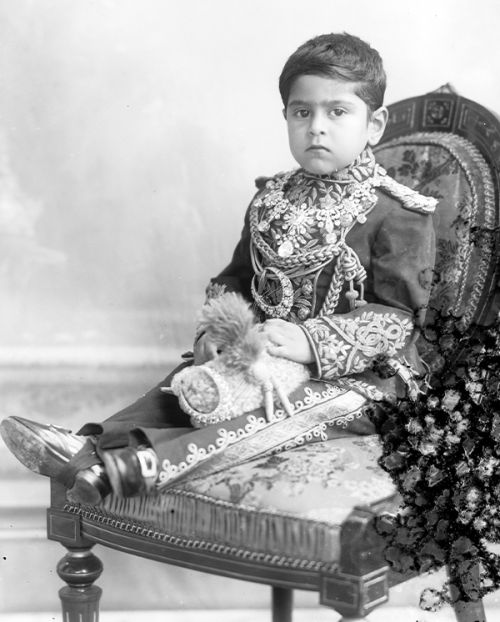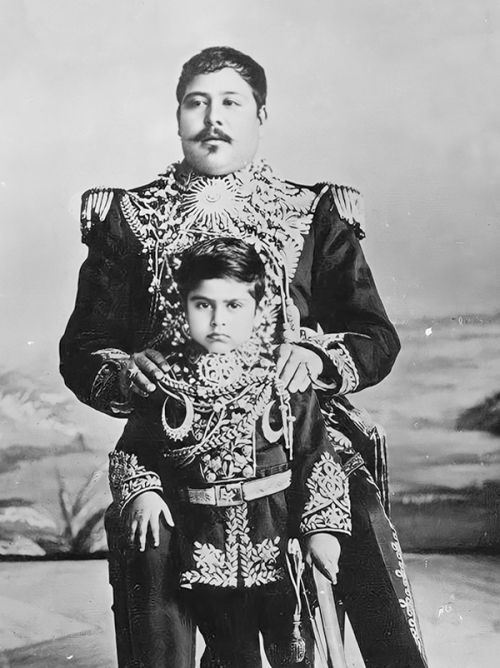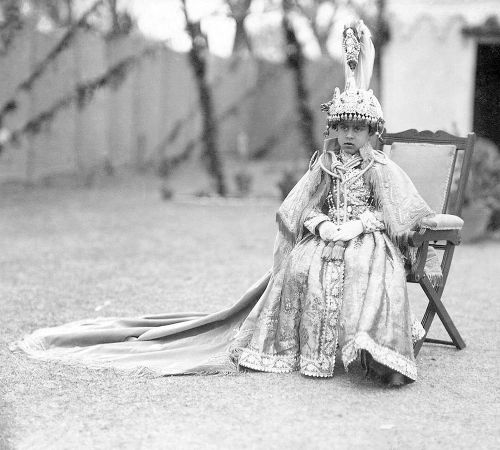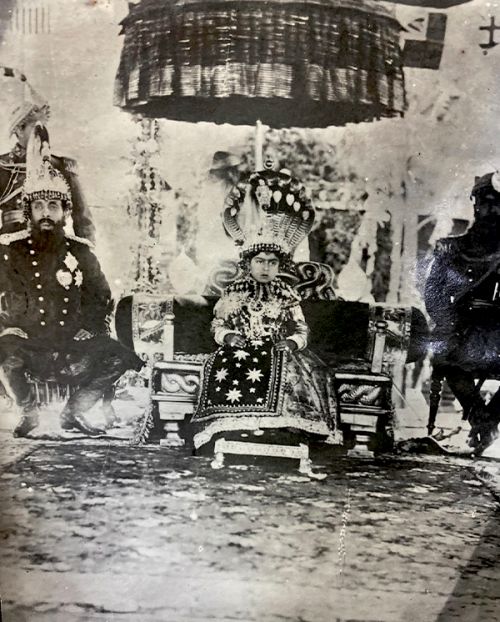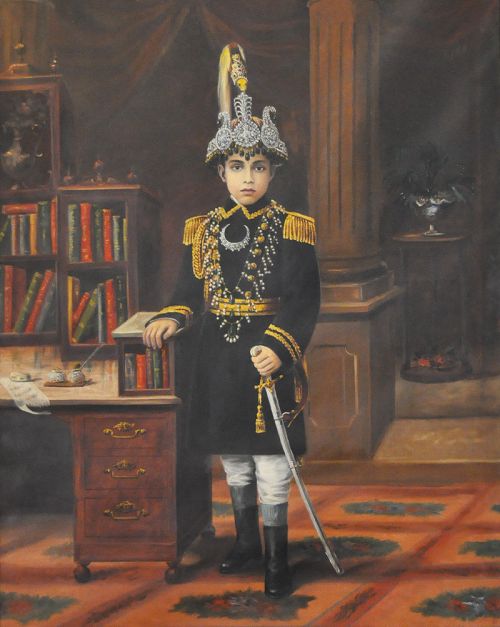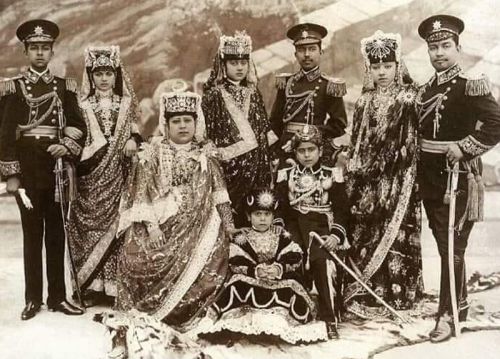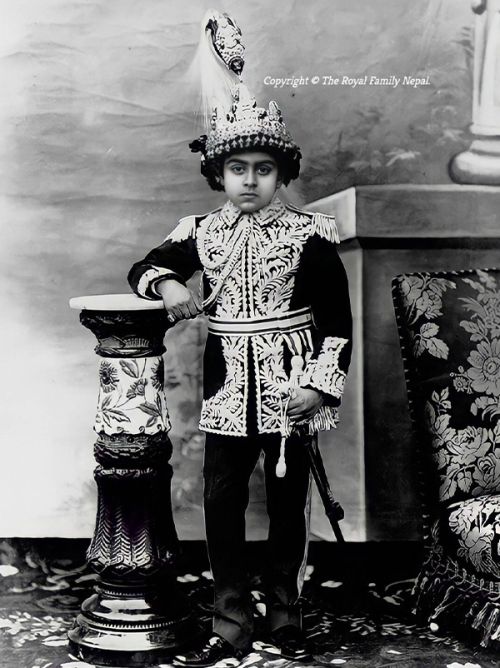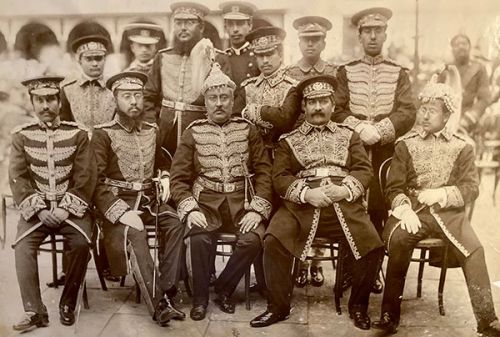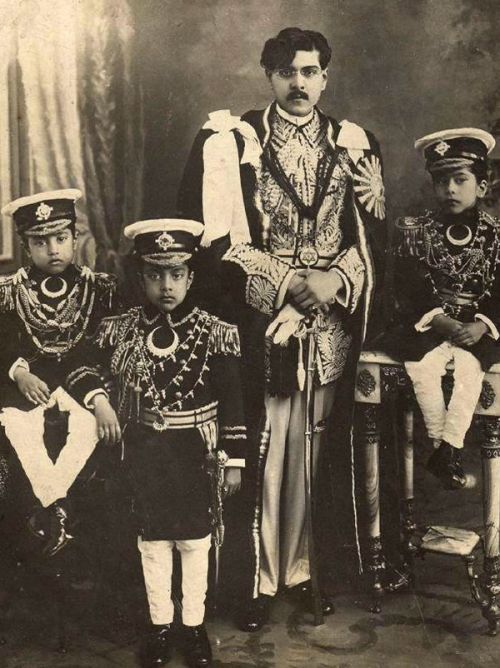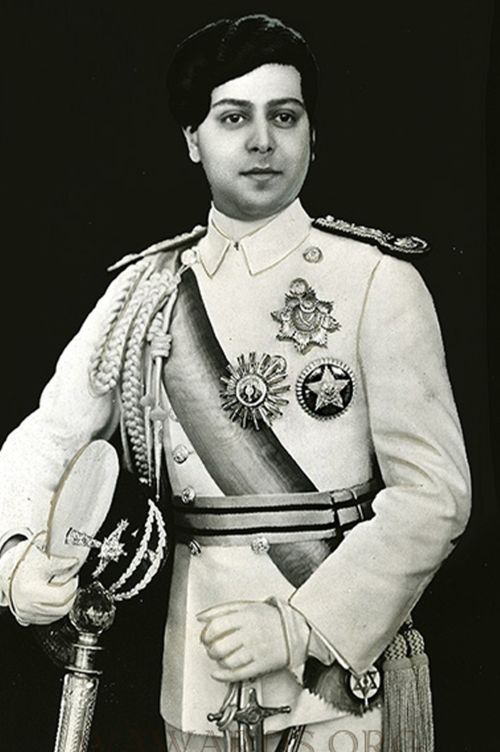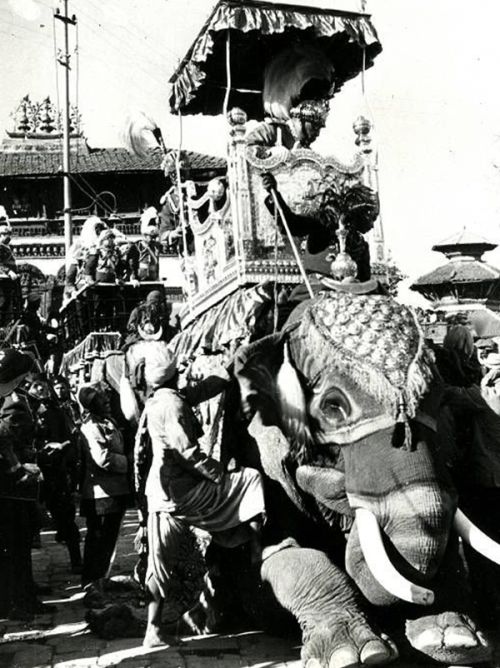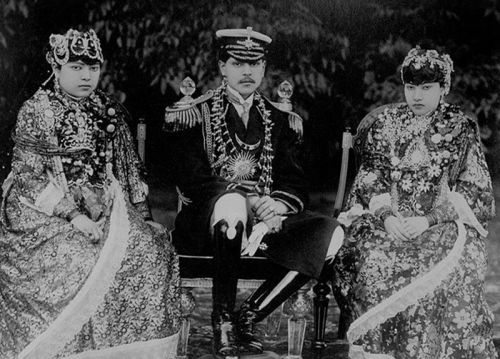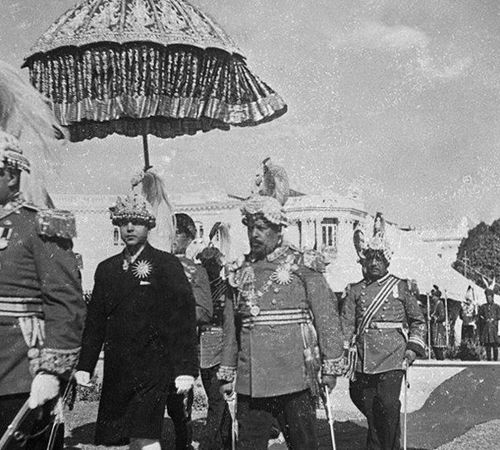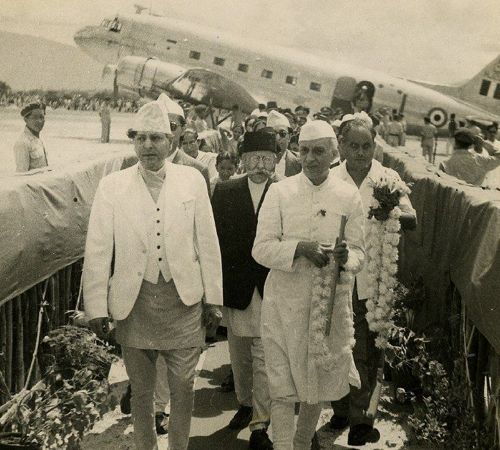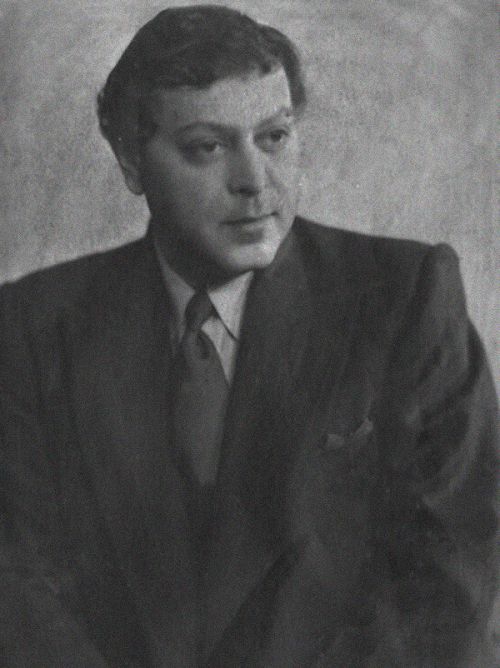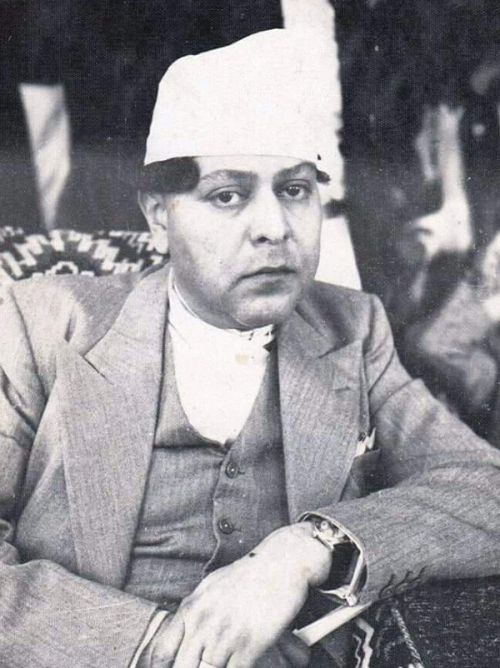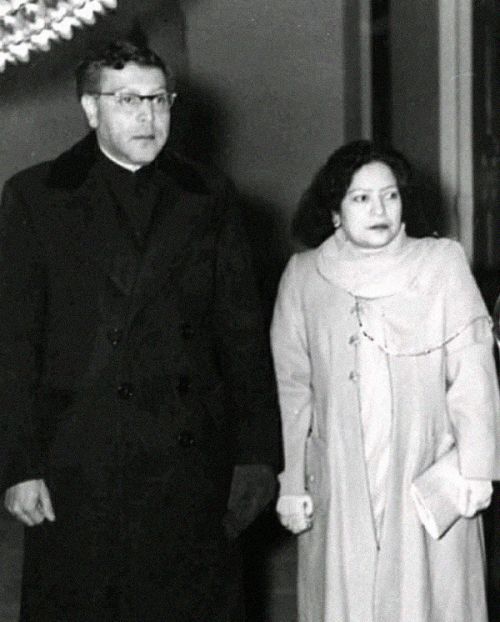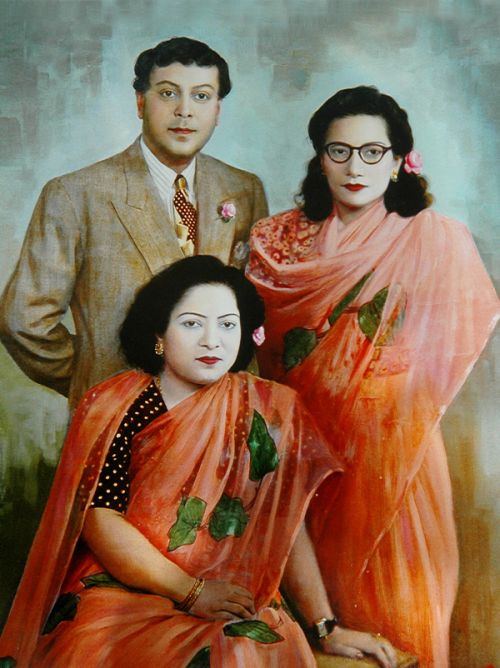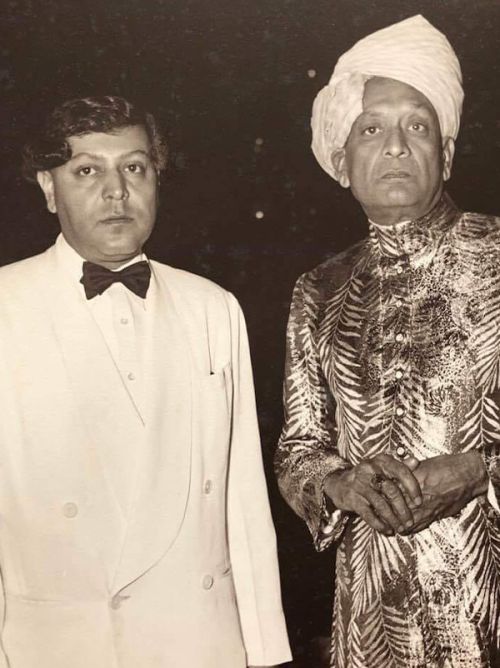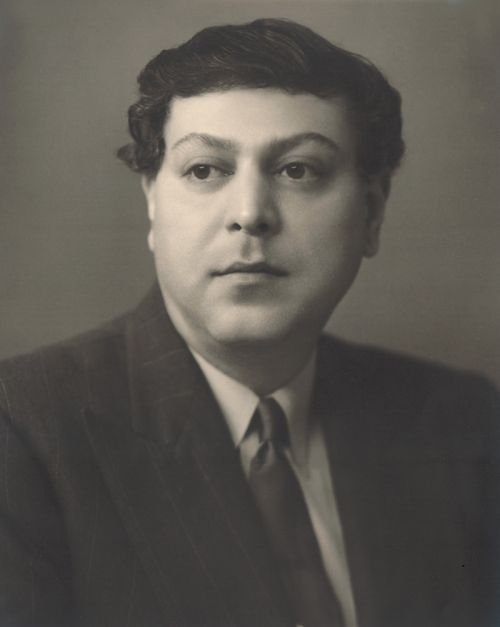
महाराज
त्रिभुवन वीर विक्रम शाह देव
शासनकाल ११ डिसेम्बर १९११ – १३ मार्च १९५५
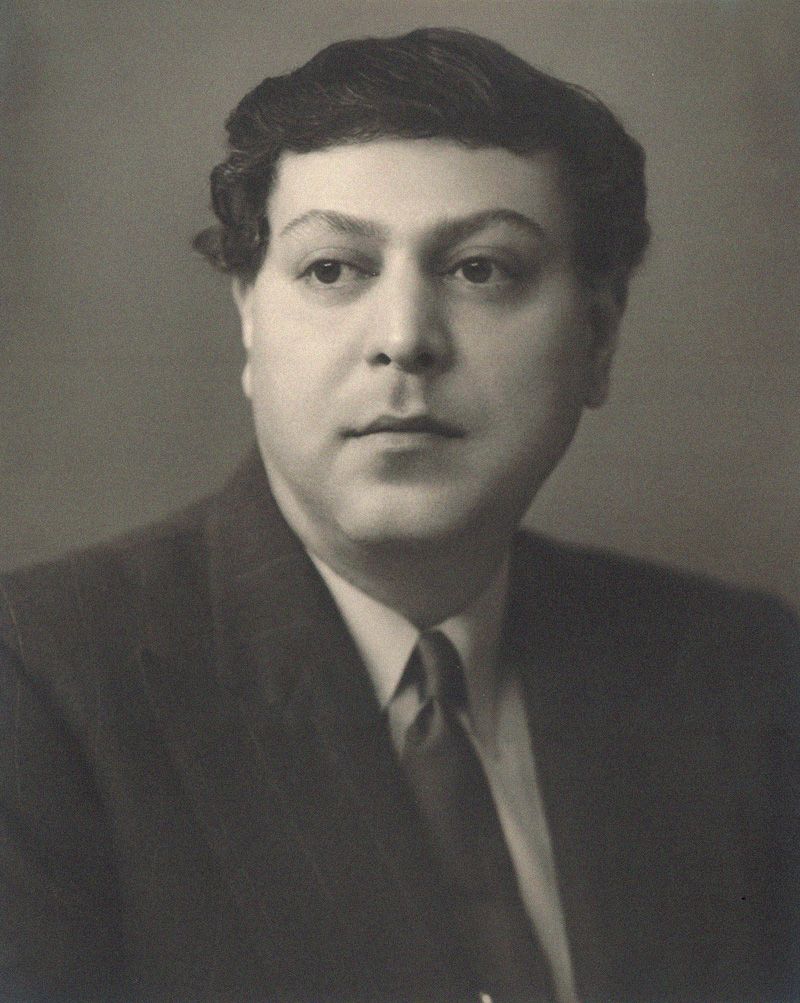
महाराजाधिराज त्रिभुवन वीर विक्रम शाह देव मात्र ५ वर्षको उमेरमा आफ्ना पिता गुमाउनुभयो। उहाँलाई २० फेब्रुअरी १९१३ मा हनुमानढोका दरबारको नसाल चोकमा गद्दीमा बसाइयो, जहाँ उहाँकी आमाले रेजेन्टको रूपमा भूमिका निर्वाह गर्नुभयो। एक नाममात्रको राजा भएर, उहाँले वंशानुगत राणा प्रधानमन्त्रीहरूले गद्दी र आफ्नै व्यक्तित्वमाथि राखेको अधिकार अनुभव गर्नुभयो। देशका सार्वभौम शासकका रूपमा, उहाँले जनताहरू राणासँग असन्तुष्ट रहेको कुरा पनि बुझ्नुभयो।
उहाँको जन्म नभएसम्म, उहाँकी जेठी दिदी श्री ५ राजकुमारी लक्ष्मी गद्दीकी उत्तराधिकारी थिइन् र युवराज्ञीको उपाधि धारण गर्नुभएको थियो।
For most part of his reign as the King of Nepal, His Majesty King Tribhuvan Bir Bikram Shah Dev was a titular king.
The Ranas indulged in opulence and extravagance, while the people suffered in impoverished conditions. A people’s king, His Majesty King Tribhuvan contributed towards and actively participated in abolishing the autocratic Rana regime. He is thus known as the “Father of the Nation”.

King Tribhuvan in full regalia post his coronation.
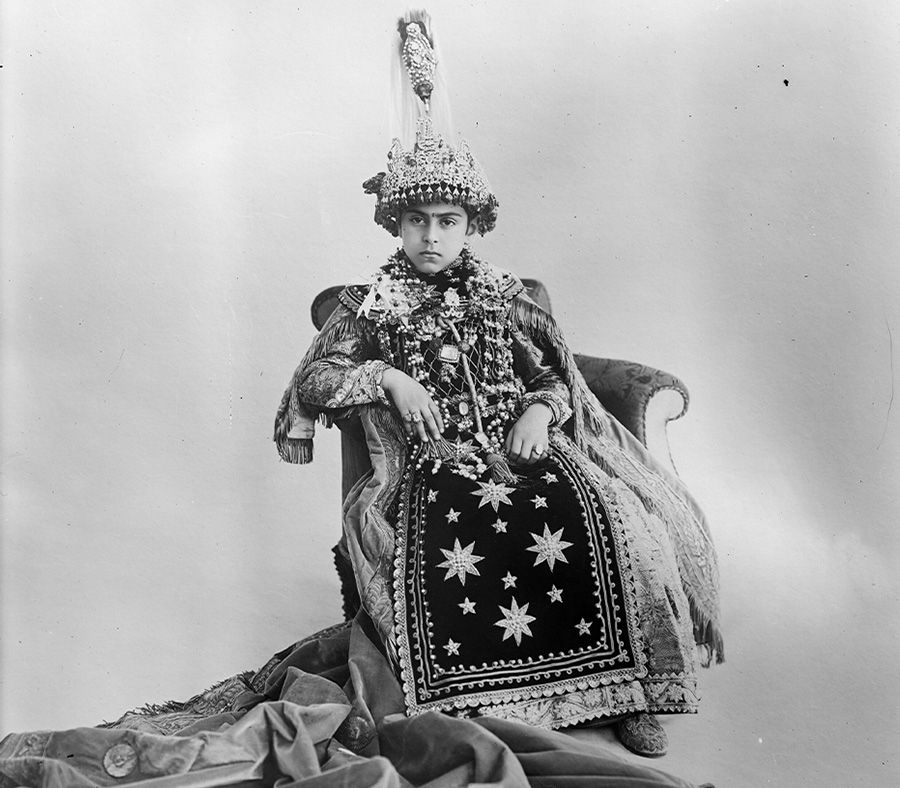


From top: 1) His Majesty King Tribhuvan’s coronation portrait. 2) King Tribhuvan with his sons, Crown Prince Mahendra (standing), Prince Basundhara and Prince Himalaya. 3) HM King Tribhuvan (center), Queen Mother Divyeshwari Lakshmi (on his left), and his sisters and brother-in-laws.
EARLY LIFE
His Majesty King Tribhuvan Bir Bikram Shah Dev was the first-born son of His Majesty King Prithvi Bir Bikram Shah Dev. He was born on 30 June 1906 to His Majesty the King and his Queen consort, Her Majesty Queen Divyeshwari Lakshmi Devi Shah. Until his birth, his eldest sister, Princess Lakshmi was heir to the throne and held the title of Crown Princess.
Soon after the birth of HRH Crown Prince Tribhuvan, His Majesty King Prithvi died under suspicious circumstances. The young Crown Prince ascended the throne on 11 December 1911. He was only 5 years old. Until he came of age, Her Majesty the Queen Mother Diveyeshwari was the regent.
Soon after the birth of HRH Crown Prince Tribhuvan, His Majesty King Prithvi died under suspicious circumstances. The young Crown Prince ascended the throne on 11 December 1911. He was only 5 years old. Until he came of age, Her Majesty the Queen Mother Diveyeshwari was the regent.
FAMILY LIFE
At the age of 12, His Majesty King Tribhuvan Bir Bikram Shah Dev was married to Princess Kanti at the Narayanhiti Royal Palace in March 1919. Later, the same day he also married Princess Ishwari. On 11 June 1920, His Majesty’s heir His Royal Highness Crown Prince Mahendra Bir Bikram Shah was born. HRH Crown Prince Mahendra was followed by siblings HRH Prince Himalaya Bir Bikram Shah, HRH Princess Trilokya Rajya Lakhsmi Shah, HRH Princess Vijaya Rajya Lakhsmi Shah, HRH Princess Bharati Rajya Lakshmi Shah, HRH Prince Basundhara Bir Bikram Shah and HRH Princess Nalini Rajya Lakshmi Shah.
Personal Interests
His Majesty King Tribhuvan was fond of photography and had his own studio and a dark room in his palace residence to process the films. He would often take pictures of his family, the palace grounds and the surrounding scenery. His Majesty was also attune to music, especially classical ragas, and enjoyed listening to it. He played the violin very well too. His Majesty also embraced athletics and the outdoors through his affection for horseback riding.
LIFE AS
THE KING
11 December 1911 – 13 March 1955
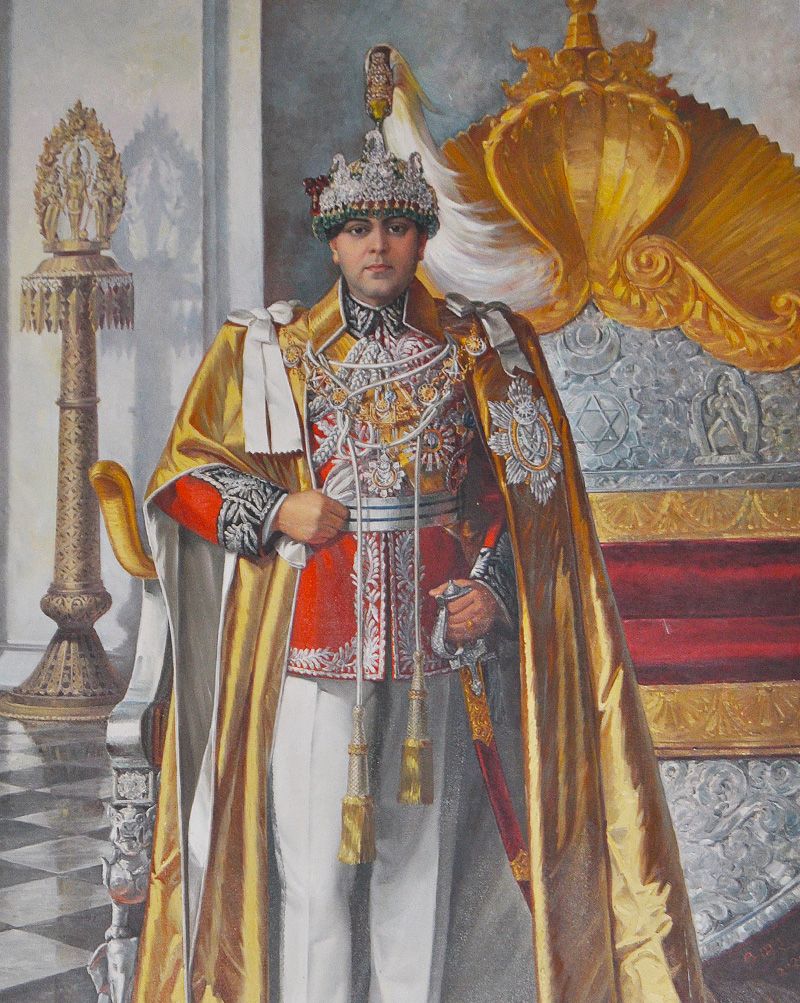
On 15 February 1951, His Majesty returned to Nepal as the King of the country. On February 18, 1951, he addressed the nation and declared democracy, ending the 104-year long Rana regime. The date continues to be celebrated as Democracy Day in Nepal.
His Majesty, although threatened and suppressed, was doing everything in his power to free himself, his country, and his people out of the grasp of the Ranas.
His Majesty King Tribhuvan, for most part of his life, was a titular king confined to his palace grounds and restrained in his activities. The Ranas held absolute power over the kingdom and the king. His Majesty wasn’t allowed to speak to outsiders without the Rana Prime Minister’s permission and couldn’t step outside of palace grounds without the Prime Minister’s approval and a Rana escort, and was only brought out in public for the sake of formality. While he had all the riches of the world, he was devoid of his own freedom.
To the world, His Majesty was presented as a debauched King, busy drinking and doing opium. And so he continued to be of little interest to the rest of the world as well as his own people. In reality, His Majesty, although threatened and suppressed, was doing everything in his power to free himself and his country out of the grasp of the Ranas.
To the world, His Majesty was presented as a debauched King, busy drinking and doing opium. And so he continued to be of little interest to the rest of the world as well as his own people. In reality, His Majesty, although threatened and suppressed, was doing everything in his power to free himself and his country out of the grasp of the Ranas.
The Dawn of Democracy
By the mid-1930s, people’s discontentment with the Ranas had led to the establishment of several movements to overthrow them, notably the Nepal Praja Parishad, to which His Majesty King Tribhuvan himself gave his explicit support. In November 1950 with the help of allies, the 44 year old King along with his family drove out of the palace for a hunting trip. Instead, they drove to the Indian Embassy and took refuge. He was accompanied by his son, HRH Crown Prince Mahendra and the eldest grandson, HRH Prince Birendra, among others. Mahendra’s second son, HRH Prince Gyanendra was left behind at the palace with the aaya. The then Prime Minister, Mohan Shamsher Jung Bahadur Rana became furious and responded to His Majesty’s move by calling an emergency meeting of the cabinet on 7 November 1950 at Singha Durbar. He announced HRH Prince Gyanendra Bir Bikram Shah, the three-year-old grandson of His Majesty, as the new King of Nepal. On 10 November, His Majesty King Tribhuvan with his family flew to India where he was formally welcomed by Indian Prime Minister Jawahar Lal Nehru.
The removal of the King led to huge demonstrations in the country that compelled the Rana Prime Minister, Mohan Shamsher Jung Bahadur Rana to negotiate with His Majesty and the Nepali Congress. Peace talks were held in New Delhi between HM King Tribhuvan, representatives of the Nepali Congress and representatives of the Rana Government, which led to an agreement according to which HM King Tribhuvan was to form a new ministry, under his leadership, consisting of the Nepali Congress and the Ranas on an equal basis.
On 15 February 1951, His Majesty King Tribhuvan returned to Nepal as the King of the country. On February 18, 1951, he addressed the nation and declared democracy, ending the 104-year long Rana regime. The date continues to be celebrated as Democracy Day in Nepal.
As a key figure in bringing democracy to Nepal, he is also referred to as the “Father of the Nation”. He also issued a proclamation establishing a ten-member Council of Ministers headed by Prime Minister Mohan Shamsher. The Council of Ministers consisted of five representatives of the NC and five representatives of the Rana family. Mohan Shamsher held the position for a few more months and was succeeded by Matrika Prasad Koirala.
Not long after, on 13 March 1955, His Majesty King Tribhuvan passed away in Cantonal Hospital, Zürich, Switzerland after suffering a heart attack. He was just 48 years old.
During his second tenure as the King, he opened Nepal to the world and contributed towards a booming tourism industry that would become one of the main sources of income for the country.
The removal of the King led to huge demonstrations in the country that compelled the Rana Prime Minister, Mohan Shamsher Jung Bahadur Rana to negotiate with His Majesty and the Nepali Congress. Peace talks were held in New Delhi between HM King Tribhuvan, representatives of the Nepali Congress and representatives of the Rana Government, which led to an agreement according to which HM King Tribhuvan was to form a new ministry, under his leadership, consisting of the Nepali Congress and the Ranas on an equal basis.
On 15 February 1951, His Majesty King Tribhuvan returned to Nepal as the King of the country. On February 18, 1951, he addressed the nation and declared democracy, ending the 104-year long Rana regime. The date continues to be celebrated as Democracy Day in Nepal.
As a key figure in bringing democracy to Nepal, he is also referred to as the “Father of the Nation”. He also issued a proclamation establishing a ten-member Council of Ministers headed by Prime Minister Mohan Shamsher. The Council of Ministers consisted of five representatives of the NC and five representatives of the Rana family. Mohan Shamsher held the position for a few more months and was succeeded by Matrika Prasad Koirala.
Not long after, on 13 March 1955, His Majesty King Tribhuvan passed away in Cantonal Hospital, Zürich, Switzerland after suffering a heart attack. He was just 48 years old.
During his second tenure as the King, he opened Nepal to the world and contributed towards a booming tourism industry that would become one of the main sources of income for the country.
His
Queens
Queens
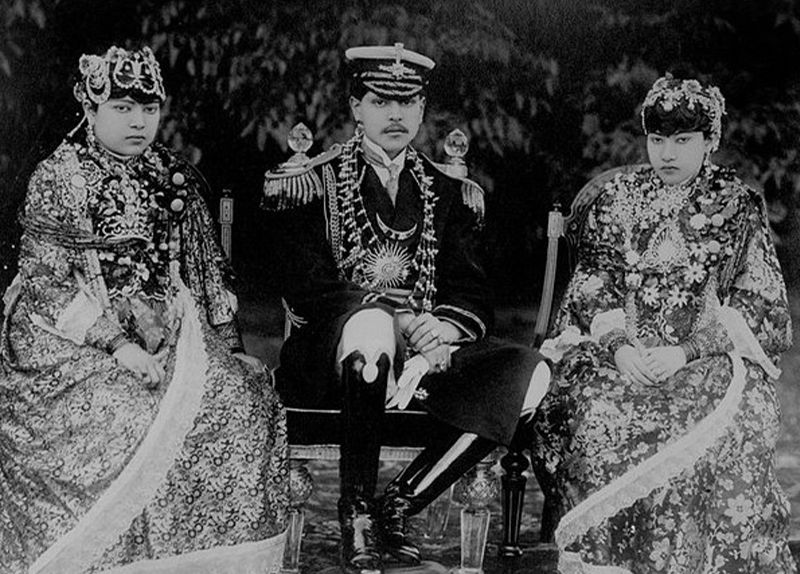
A portrait of His Majesty King Tribhuvan with his wives, Their Majesties Queen Kanti (left) and Queen Ishwari (right).
Their Majesties Queen Kanti and Queen Ishwari Rajya Lakshmi Devi Shah
Their Royal Highnesses Princess Kanti and Princess Ishwari were sisters by birth. Born to Arjan Singh Sahib, Raja of Chhatara, Bargaon and Oudh and his wife, Krishnavati Devi Sahiba, the two sisters were just a year apart. Princess Kanti was born on 5 July 1906 and Princess Ishwari was born in September 1907.
Their Majesties Queen Kanti and Queen Ishwari, although different in body, were one in spirit. They dressed identical, from clothing and jewelry to their flower heads. Both devoted wives, they played a key role in supporting King Tribhuvan in freeing Nepal from Ranarchy.
When Their Royal Highnesses Princess Kanti was 12 years old and Princess Ishwari was 11, they were married in a double ceremony to His Majesty King Tribhuvan Bir Bikram Shah Dev in March of 1919. Princess Kanti was married to him first, making her the first wife and Queen consort. Later the same day, the King was married to Princess Ishwari.
On 11 June 1920, HM Queen Kanti gave birth to her first child and heir to the throne, HRH Crown Prince Mahendra. She was also mother to HRH Prince Himalaya, HRH Princess Trilokya, HRH Princess Vijaya and HRH Princess Bharati. On 25 November 1921, HM Queen Ishwari became a mother with the birth of her firstborn, HRH Prince Basundhara. Her second child was HRH Princess Nalini, born on 24 September 1924.
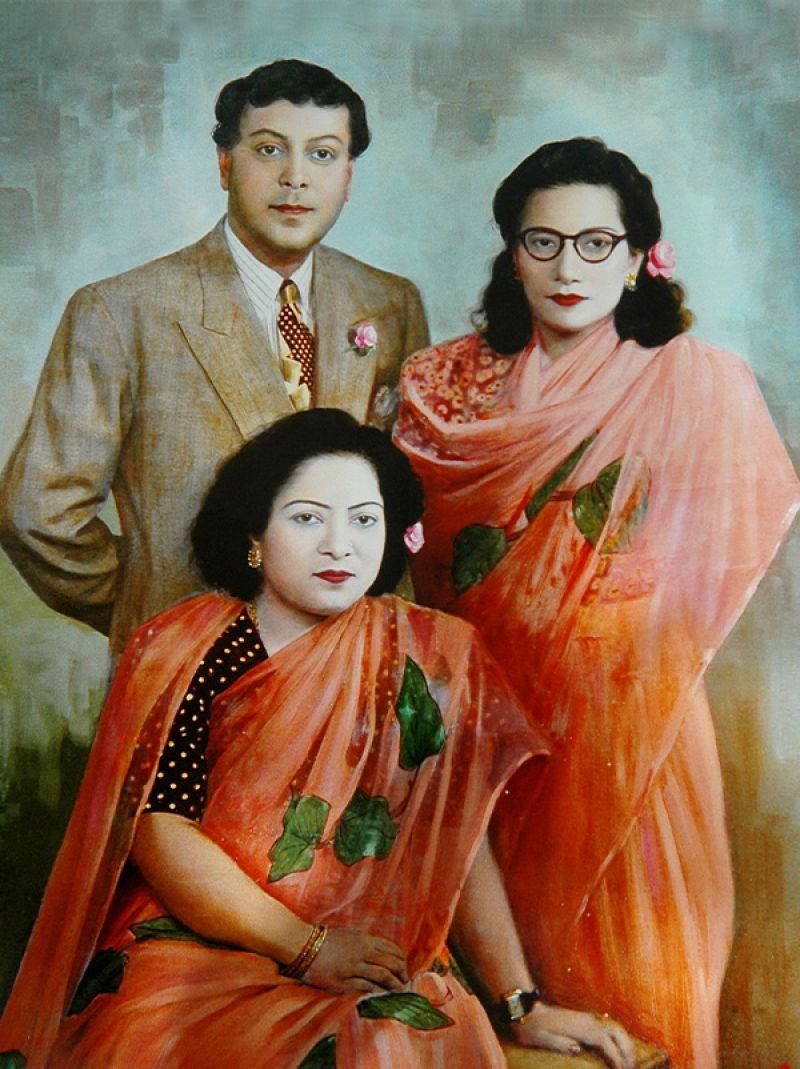
A painting of HM King Tribhuvan alongside his wives, Their Majesties Queen Kanti (sitting) and Queen Ishwari.
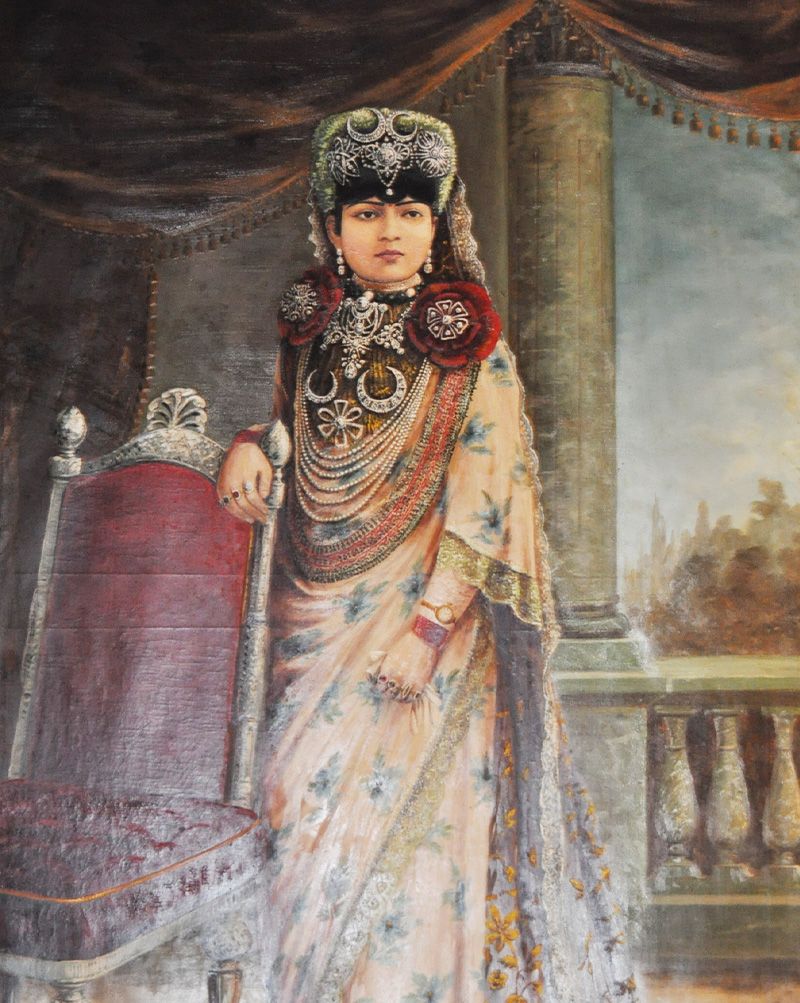
Painting of HM Queen Kanti Rajya Lakshmi Devi Shah.
During the reign of HM King Mahendra Bir Bikram Shah Dev, under the initiation of the Their Majesties the Queen Mothers Kanti and Ishwari a University Commission was established on 31 March 1956 with the aim to start a Nepali university. Her Majesty the senior Queen Mother Kanti served as its Chairman and Her Majesty the junior Queen Mother Ishwari served as its Vice Chairman.
The two Queen Mothers laid down the foundation stone on 25 June 1958 for the university and donated 375 ropanis of their personal land in Lalitpur designated for their widowhood by their late husband King Tribhuvan. A year later, the university was established and it was named Tribhuvan University.
The two Queen Mothers laid down the foundation stone on 25 June 1958 for the university and donated 375 ropanis of their personal land in Lalitpur designated for their widowhood by their late husband King Tribhuvan. A year later, the university was established and it was named Tribhuvan University.
We urge also to all our subjects to be truly loyal to us and to all our successors and order all our officers in the Army and civil service officers in our country to help and cooperate obediently, with all our ministers in execution of their responsibilities.
– HM KING TRIBHUVAN BIR BIKRAM SHAH
Titles &
Honours
Honours
1950
AFGHANISTAN (FOREIGN HONOUR)
Grand Cordon of the Order of the Supreme Sun

1954
ITALY (FOREIGN HONOUR)
Grand Cross of the Order of Merit of Italian Republic

1954
FRANCE (FOREIGN HONOUR)
Grand Cross of the Legion of Honour

1937
NEPAL (NATIONAL HONOUR)
Sovereign of the Order of Tri Shakti Patta

1934
NEPAL (NATIONAL HONOUR)
Sovereign of the Order of Ojaswi Rajanya

1932
NEPAL (NATIONAL HONOUR)
Sovereign of the Order of Gorkha Dakshina Bahu

1918
NEPAL (NATIONAL HONOUR
Sovereign of the Order of Nepal Taradisha


